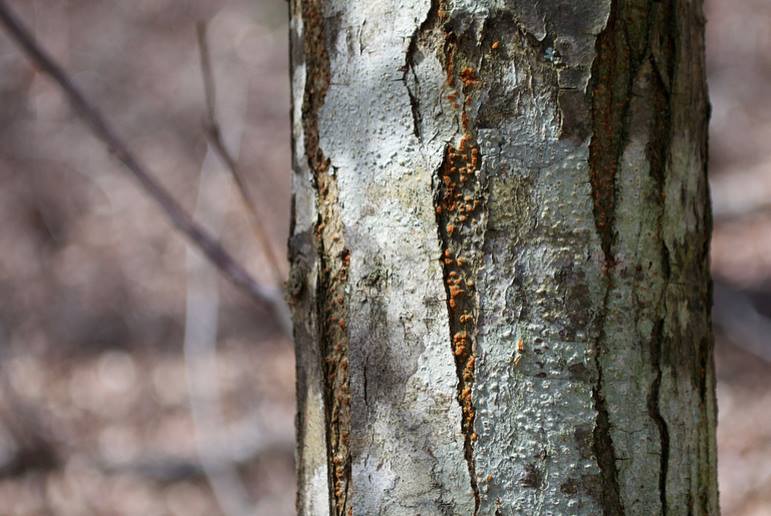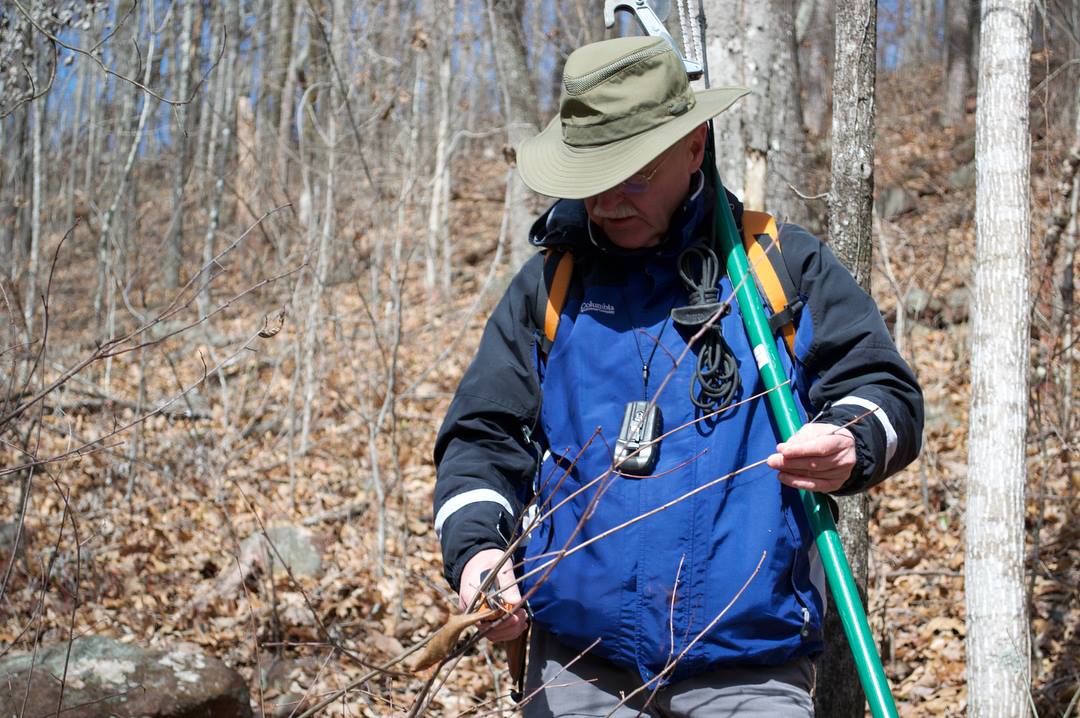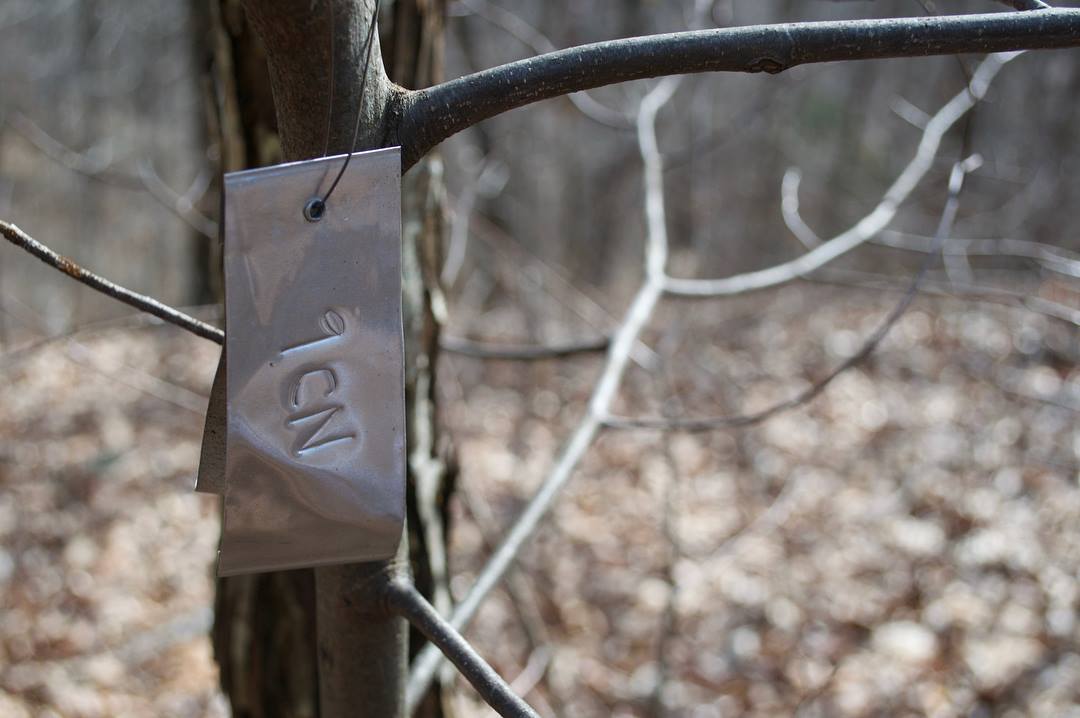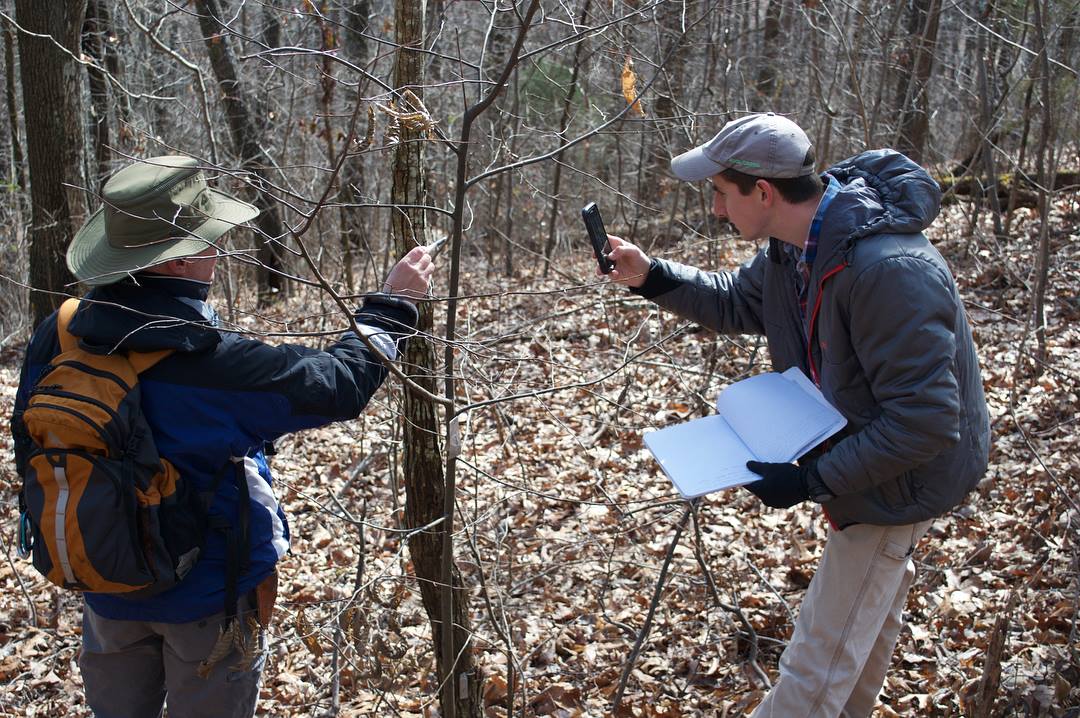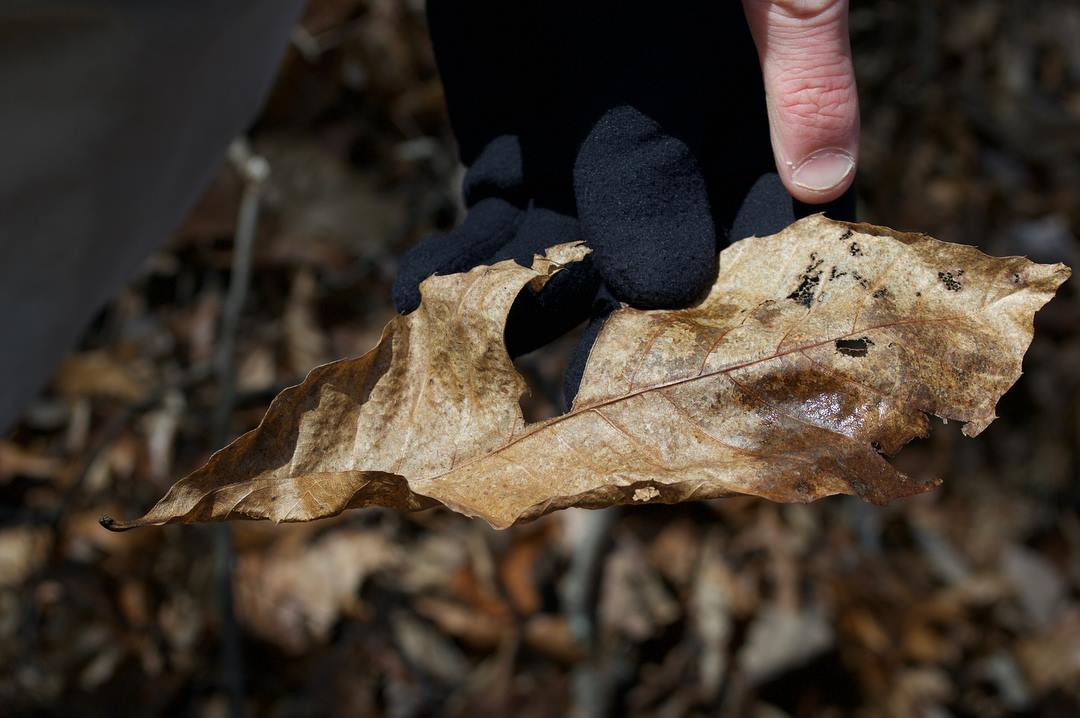Chestnut Blight Survey
In late 2017, Ruffner conducted a survey of a group of young American chestnut trees on Ruffner Mountain, and more specifically how they are faring under the effects of root rot, or Phytophthora root rot (PRR), and Cryphonectria parasitica, the two primary causes of American chestnut blight in the past century. Today, the American chestnut (Castanea dentata) has all but disappeared from the American landscape, their populations reduced by more than 90% by the devastating speed of the Cryphonectra spread in just the first half of the 20th century. Nearly four billion disappeared over a 40 year span. Even Ruffner Mountain once bristled with these mighty hardwoods, but the combined power of Cryphonectria and the mining industry quickly and efficiently cleared them. It is said that in spring, the blooming chestnut would blanket the whole of the mountain in a sea of white. Now, the search for just one is an arduous task. But due to the work and research of people like David Morris of The American Chestnut Foundation, and Trent Deason of UT Chattanooga, their numbers are slowly being restored, and the effects of these invasive fungal diseases are being studied in an attempt to understand and mitigate their impact. Hopefully, one day, future generations will again be able to appreciate first-hand the majesty of a towering American chestnut.
To learn more about the American chestnut and how it is being affected by chestnut blight,
visit The American Chestnut Foundation.
See additional photos of our 2017 American chestnut blight survey below.


